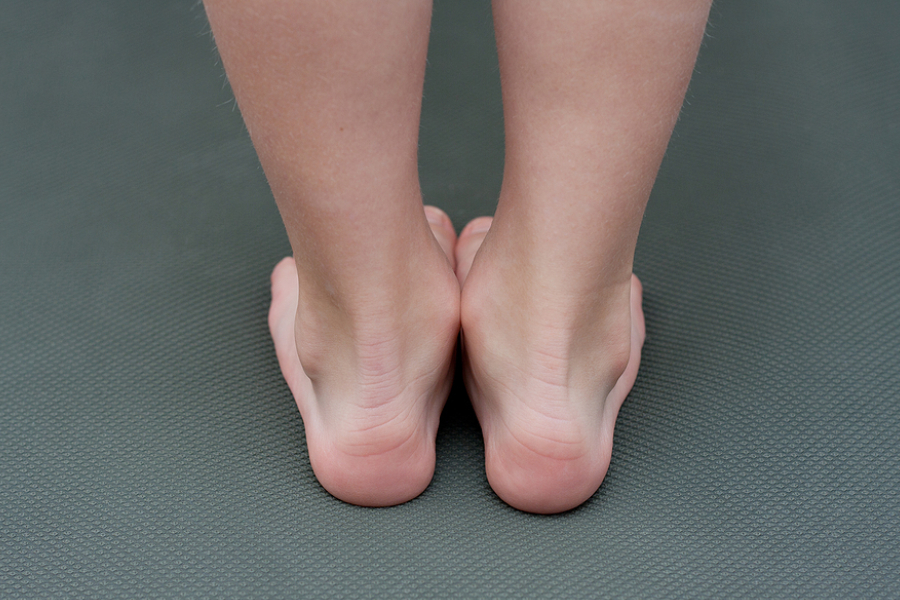Can Flat Feet Be Corrected? Here’s What You Need to Know

Flat feet, also known as fallen arches, are a common condition where the arch on the inside of the foot is flattened, allowing the entire sole to touch the ground when standing. While some people with flat feet experience no discomfort, others may deal with persistent foot pain, poor posture, or even issues in the knees and lower back. If you’re wondering whether flat feet can be corrected, the answer isn’t a simple yes or no — it depends on various factors including age, severity, and underlying causes.
Understanding the causes of flat feet
Flat feet can be either congenital (present from birth) or acquired over time. In children, flat feet are often a normal part of development, as their arches may not fully form until around the age of six. However, if the arches never develop or collapse later in life, the condition can become problematic.
Adult-acquired flatfoot is frequently due to dysfunction in the posterior tibial tendon — a key tendon that supports the arch (Knapp & Constant, 2024). Other potential causes include obesity, diabetes, arthritis, or pregnancy, which can put extra stress on the feet, causing them to hurt during pregnancy, or injuries that weaken the tendons or bones in the foot. Regardless of the cause, the flattening of the arch can lead to strain and pain in different parts of the foot and body.
Recognising the symptoms and complications
Not everyone with flat feet will show symptoms. However, those who do may experience aching in the arch or heel, swelling along the inside of the ankle, or pain that worsens with activity. In some cases, it can lead to altered gait or alignment issues, resulting in knee, hip, or lower back pain.
One overlooked symptom is toe pain, which can develop when the altered biomechanics of flat feet cause excess pressure on the toes. Left unaddressed, this can lead to more serious conditions like bunions, plantar fasciitis, or tendonitis — all of which may require professional toe pain treatment to manage effectively.
Can flat feet be corrected in children?
Yes, flat feet in children can often be corrected or improved, especially if caught early. Flexible flat feet, which are common in kids, usually improve as the child grows and their muscles and bones develop. If the condition causes pain or limits activity, early intervention can be helpful.
Podiatrists may recommend supportive footwear, orthotics, or specific strengthening exercises to encourage proper foot development. In rare cases where the flat foot is rigid or associated with other conditions (like tarsal coalition), surgical options may be explored. The key is early diagnosis and consistent monitoring.
What about correction in adults?
In adults, correcting flat feet becomes more complex. Unlike children, adult bones and tendons are fully developed, making structural changes more difficult without medical intervention. However, “correction” doesn’t always mean surgery. In many cases, symptoms can be managed or significantly improved through conservative methods.
Custom orthotics are one of the most effective non-surgical treatments. These specially designed inserts provide support to the arch, redistribute pressure, and improve alignment.
If conservative measures fail and pain or dysfunction persists, surgical intervention may be considered. Procedures vary, from tendon repairs to bone realignment, and are typically reserved for severe or progressive cases.
When to see a podiatrist for flat feet
If you notice ongoing foot pain, swelling, or difficulty standing or walking for long periods, it’s best to consult a podiatrist. A thorough biomechanical assessment can help determine the extent of the condition and the best course of action. Ignoring flat feet can lead to secondary issues that are harder to treat later on.
Professional podiatry in Singapore is widely accessible, offering diagnostic tools like X-rays and gait analysis, along with customised treatment plans tailored to individual needs. The sooner you seek help, the better the outcome tends to be — especially when it comes to preventing further complications.
At the Family Podiatry Centre, professional podiatric care is conveniently available at two clinic locations in Singapore: Jln Serene in Bukit Timah and Joo Chiat Road at East Coast. If you’re seeking a podiatrist at East Coast or Bukit Timah, our clinic is well-positioned to serve families and individuals living in the area, with experienced staff ready to support your foot health needs.
Lifestyle changes and preventive strategies
Even if your flat feet cannot be structurally corrected, lifestyle changes can go a long way in alleviating symptoms. Maintaining a healthy weight reduces excess strain on your feet, while wearing supportive footwear can help stabilise your gait.
Exercises that strengthen the calf, ankle, and foot muscles may also provide relief. Simple routines such as toe curls, arch lifts, and heel raises can be incorporated into your daily schedule with minimal effort. Avoid walking barefoot on hard surfaces, and consider stretching routines if you experience tightness in the Achilles tendon or calf muscles.
Conclusion
While not all cases of flat feet can be “corrected” in the traditional sense, there are plenty of effective strategies to manage symptoms and improve quality of life. If you're experiencing discomfort or have concerns about your arches, Family Podiatry Centre is ready to help. Our clinics at Bukit Timah and East Coast provide professional care tailored to your needs. Reach out for a consultation and take the first step towards healthier, happier feet.
Disclaimer: The word "treatment" in this article refers to the care and management of a patient’s health to prevent, cure, or improve a condition. Treatment results vary and do not necessarily indicate a cure.
References:
1. Knapp, P. W., & Constant, D. (2024, May 21). Posterior tibial tendon dysfunction. StatPearls - NCBI Bookshelf. https://www.ncbi.nlm.nih.gov/books/NBK542160/#:~:text=Posterior%20tibial%20tendon%20dysfunction%20(PTTD)%2C%20now%20renamed%20progressive%20collapsing,to%20bony%20involvement%20and%20deformity.
